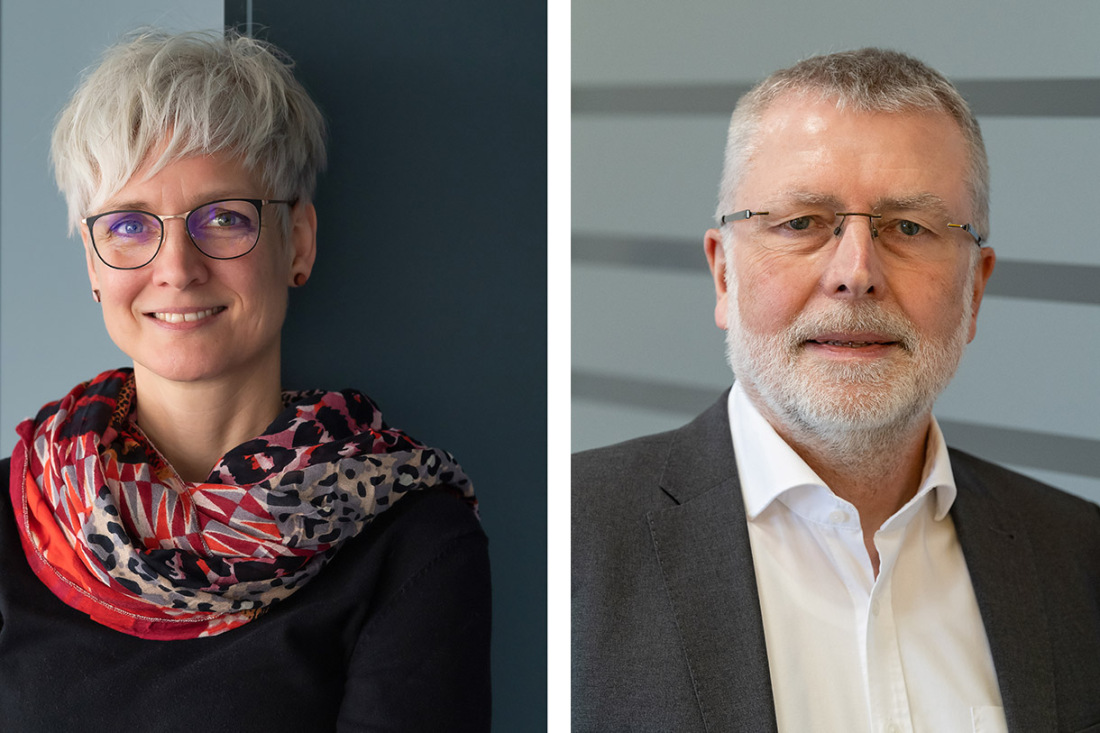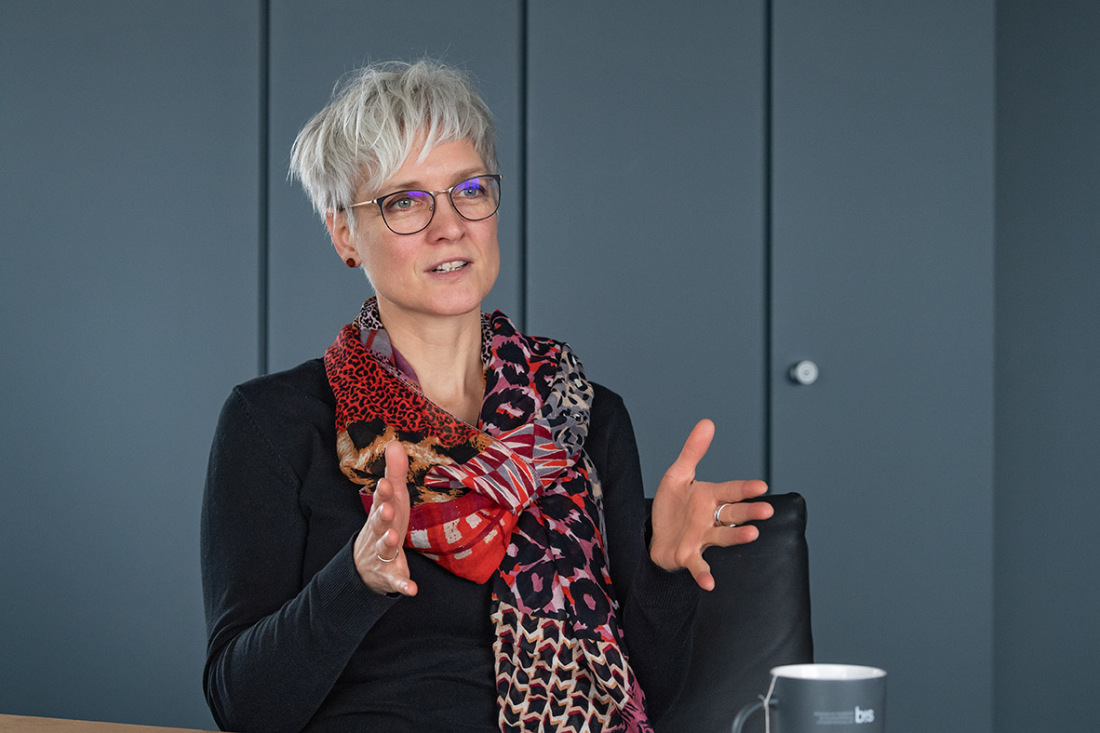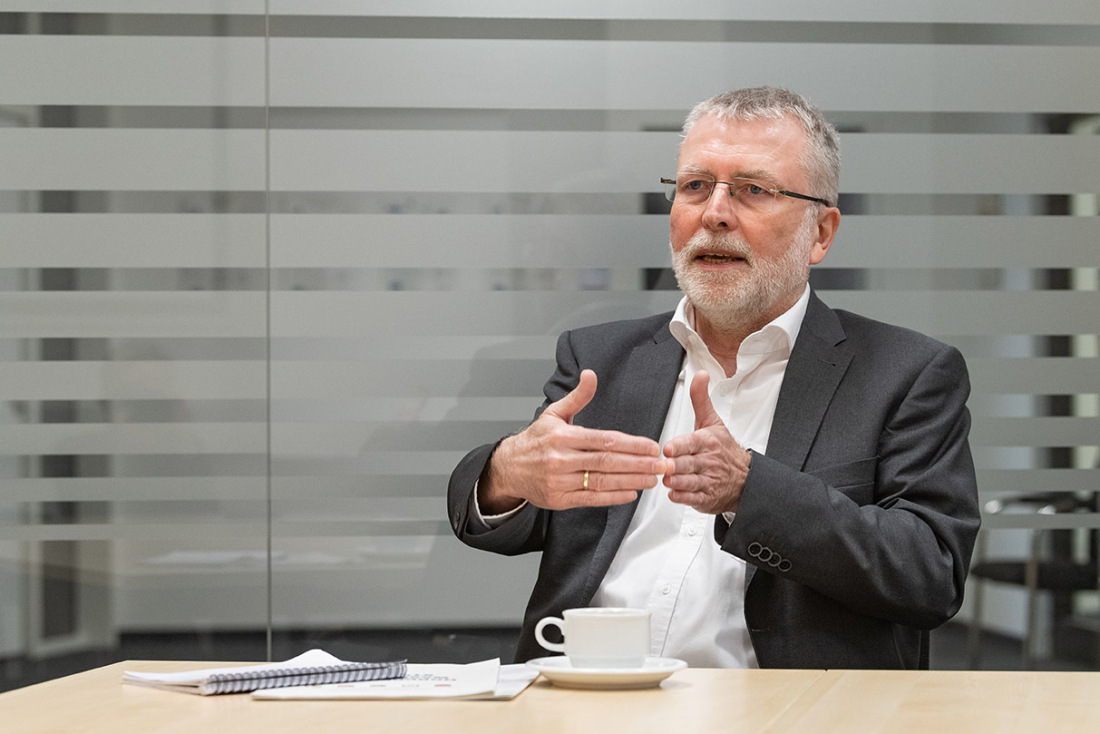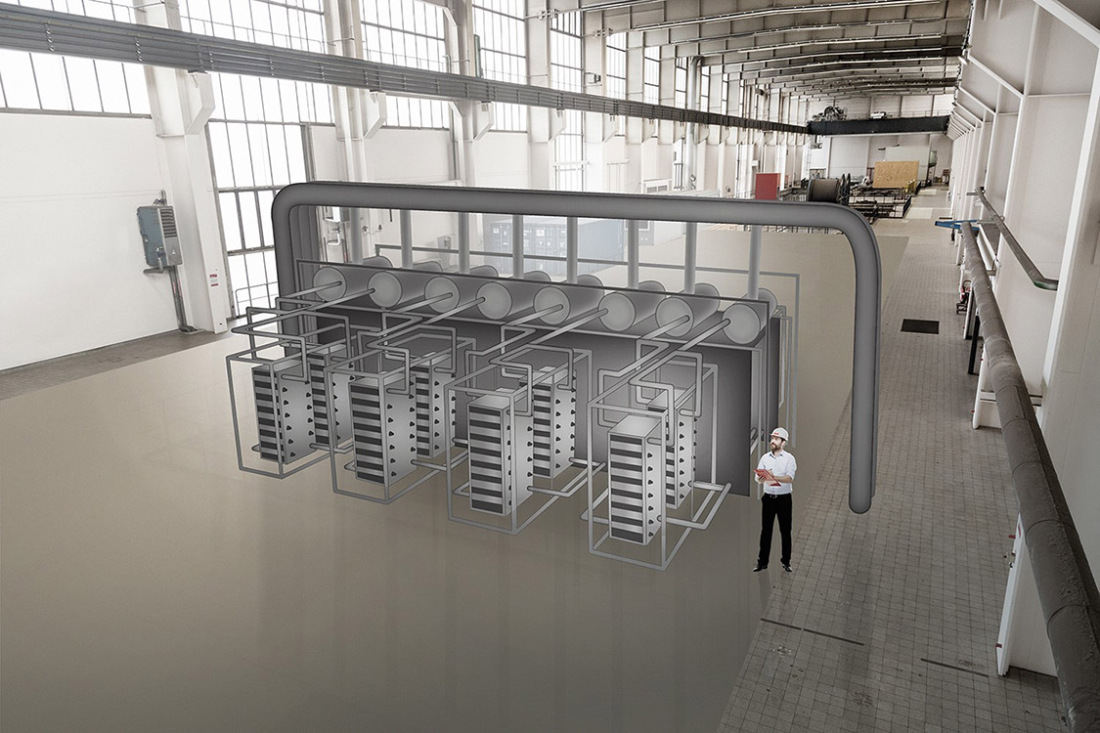Bremen and Bremerhaven Projects Prioritising Hydrogen
Hydrogen in BremenA multitude of projects in the "State of Bremen's Hydrogen Strategy" are already underway

Hydrogen is an important climate-neutral energy source for our future needs. In Bremen and Bremerhaven, companies and research institutes are working hard to turn visions into reality. This is because North Germany, as a location, has great potential when it comes to using hydrogen, as a climate-neutral gas, in practical applications.
Dr. Saskia Greiner is Innovation Manager for Hydrogen at BIS (Invest in Bremerhaven). She and Dieter Voß, an advisor to Bremen's senator for the Economy, Work and Europe, outline the key areas in Bremen and Bremerhaven, in this interview.
Dr. Greiner, Bremerhaven is regarded as the test region for hydrogen applications. What does this actually mean?
Dr. Saskia Greiner: First and foremost, this involves the testing of prototypes. We use the wind power systems in Bremerhaven as a blueprint because we've already seen that prototypes have to be tested for a certain amount of time before they can be used in real life applications. Bremerhaven isn't a typical location for the generation of hydrogen or derivatives. We have neither the space nor the connections to do this here. Instead, we regard ourselves as an application hub, and want to test prototypes on-site, on the water or on the road.
Which particular prototypes are you thinking about?
Dr. Saskia Greiner: They could, for example, be a ship or a ferry, a working vessel operated by the Port Authority, tourist steamer, motor launch or tug boat. We have also commissioned a study into an innovative sailing ship. When it comes to land-based prototypes, we're focussing on logistics. There are a lot of logistics companies around here, operating vehicles of different sizes ranging up to 40-tonne tractor units. This is the ideal environment for testing prototypes. That includes vehicles which set off every morning and return every evening for refuelling, in a constantly repeating cycle.
Which partners from the fields of science and technology are particularly important to you when it comes to implementing these projects?
Dr. Saskia Greiner: In the field of mobility, our major partners are the Technologie-Transfer-Zentrum Bremerhaven (ttz (Technology Transfer Centre, Bremerhaven)) and the Institut für Seeverkehrswirtschaft und Logistik (ISL (Institute for Shipping Economics and Logistics)), because they can support us in running studies, and, of course, logistics companies with their examples of practical applications. In Bremerhaven, we're keen to involve smaller companies or component suppliers that only want to test individual components of the overall project. We also want to establish a test site for an electrolyser, an endeavour in which the Fraunhofer Institute for Wind Energy Systems (IWES) has a significant involvement.

We've already started a number of actual projects in Bremerhaven. Could you give us some examples?
Dr. Saskia Greiner: The "Testregion für mobile Wasserstoffanwendungen" (test region for mobile hydrogen applications) project has received five million Euros of funding from the Bremen-Fonds (a children's charity). We've also commissioned two studies, one involving the conversion of a police vehicle and the other of a Unimog (utility vehicle). Another study, investigating the use of a refrigerated truck, has moved us into the 40-tonne vehicle class. The findings gained in these studies will undergo scientific monitoring and be fed back into the further development of the vehicles and equipment on them.
And is there a major interdisciplinary project which could be the starting point for other initiatives?
Dr. Saskia Greiner: Yes, this is the joint "Wasserstoff - grünes Gas für Bremerhaven" (Hydrogen: Green Gas for Bremerhaven) project, which involves the creation of an test electrolyser site and its supply structures at the old Luneort airport. This initial project and the interdisciplinary project have already started, with the participation of Fraunhofer IWES, Hochschule Bremerhaven (Bremerhaven University of Applied Sciences) and the ttz, which is a sub-contractor.
If "Green Gas for Bremerhaven" is an initial project, what other initiatives will this affect?
Dr. Saskia Greiner: Establishing the test site will also involve the building of two electrolysers, each with a capacity of 1 megawatt. If they were to run 24 hours a day, they could generate 800 kilograms of hydrogen every day. We also want to use this hydrogen production in real life applications. Examples, include the supply of emergency power for a buoy and power for suitably adapted fork lift trucks in companies and for a suitably equipped industrial oven, for bakeries.
And there are many more other applications. For example, we also have a methanisation plant which uses hydrogen and CO2 to generate methane. And the Bremerhaven University of Applied Sciences will set up a decentralised energy supply, using hydrogen, as part of the "Microgrid" project which will test how renewable energies such as solar and wind power interact with hydrogen. One of the issues under investigation will be to see how hydrogen can be used to store the excess electricity generated by renewable sources such as solar and wind power. In this process, a fuel cell could be used to convert this energy back into electricity. The University of Applied Sciences will also investigate how the additional heat generated by this process could be used. A suitable hydrogen production plant is already up and running.
What progress has Bremerhaven Bus (Bremerhaven's public transport company) made with its planned introduction of hydrogen-powered vehicles?
Dr. Saskia Greiner: The first buses should arrive in Bremerhaven in the autumn. Bremerhaven Bus will also set up another parallel project, the "HyCity Bremerhaven" joint venture, in which a number of companies are involved. The project is dedicated to creating a hydrogen eco system for Bremerhaven. To achieve this, an electrolyser which will generate green hydrogen will be built at an onshore wind power plant. This green hydrogen will then be made available for purchase at a public filling station, located right next to the Bremerhaven Bus site. People will then be able to fill up with green hydrogen that is "made in Bremerhaven".

Mr. Voß, what are the key points of the hydrogen strategy for the City of Bremen that was recently signed off by the Senate?
Dieter Voß: In Bremen, the most prominent factor is the potential for the planned use of hydrogen to reduce the CO2 emissions from the steel production process. ArcelorMittal aspires to be carbon-neutral by 2045 and is planning to shut down both furnaces, one after the other. A hydrogen-powered direct reduction plant, and one or two electric arc furnaces, will be brought into operation to achieve this.
The second key project in Bremen involves using hydrogen as a means of achieving climate-neutral flight. At the heart of this initiative is the development of liquid hydrogen tank systems for use in aviation. Liquid hydrogen has been used in aeronautics for more than 40 years. Airbus in Bremen will play a leading role in the tank infrastructure for liquid hydrogen.
So, staying with the topic of "green flight" for a little longer, are the different project activities this involves taking place at the ECOMAT research and technology centre and probably other sites as well?
Dieter Voß: This project is running at a number of different locations. The parts of the project that involve Airbus's core areas of expertise will be carried out by the company itself. Airbus can outsource the additional items, such as pipework, valves and various other smaller components, it needs for the project. However, the essential components, which are installed in an airplane and must work perfectly, are made by Airbus itself. This is a key part of the company's activities and will remain in Bremen.
What is the significance of using "green" hydrogen in the gradual transformation of the steel production process for ArcelorMittal and Bremen?
Dieter Voß: At present, steel manufacturing is responsible for more than 50 percent of the CO2 emissions produced by industry in the Federal State of Bremen. This is why the steel plant has been included in two projects, known as the "Important Projects of Common European Interest"(IPCEI). In one of the first projects, green hydrogen will first be used to greatly cut the CO2 emitted by a furnace, before that furnace is shut down entirely at a point in the future. Bremen has made ten million Euros from the Bremen Fund available to help build the first electrolyser-based 12 megawatt power plant. The second furnace will be replaced by a direct reduction unit.

Are other steel producers in Europe going a similar way?
Dieter Voß: All of Europe's steel producers are finding similar solutions, with a few technical differences. No steel manufacturer can afford to say "we'll keep on doing things in the same old way". However, the question of how the EU will deal with, for example, steel from China still remains. European steel producers are making investments and will probably receive financial support for part of that investment. However, they will have to reckon with operating costs that are higher than they are today. This will make their products more expensive. If the EU then allows cheaper steel to come to Europe, for example from China, the European manufacturers will have a problem.
In professional circles, people are now talking about "Wasserstoff-Hanse" (Hanseatic Hydrogen). What does this mean?
Dieter Voß: This term comes from a project run by the University of Bremen. The broader aim of this project is to create networks of partners in the regions around the North Sea and the Baltic, to kickstart the establishment of a "Hanseatic League for Hydrogen". This is because the states that border the North Sea and the Baltic have the ideal environment for creating the hydrogen-based economy of the future. Their offshore wind power provides above average levels of renewable energies. The industrial areas around the North Sea and the Baltic are major consumers of power, and they can be supplied with it directly. And the ports are the ideal transit points for importing and forwarding hydrogen and its derivatives.
This major project is called "hyBit - hydrogen for Bremen's industrial transformation. Kickstarting a Hanseatic League for Hydrogen". This will be the core of the transformation process that will create a carbon-neutral economy in Bremen's industrial ports. And, at the same time, this will also reinforce the inter-regional networks of partners around the North Sea and Baltic coasts and hark back to the old trading tradition in this area.
Dr. Greiner and Mr. Voß, thank you talking to us!
Success Stories
Bremen’s Economy in Figures: Statistics 2025
The State of Bremen is a strong economic hub. A look at the latest statistics highlights its economic strength — summarising key data such as cargo volumes, export performance, industry turnover, and more.
Learn moreMedium-Sized Companies in Bremen Showcasing the Full Range of the Local Economy
Medium-sized companies form the backbone of Bremen’s economy. They create jobs and produce goods that are in demand worldwide. Here is a selection of ten businesses that illustrate the diversity of Bremen’s economic landscape.
Learn moreTwelve international food and beverage companies in Bremen
Becks and Melitta may be high-profile brands, but international food and beverage companies also manufacture lots of other products in Bremen and Bremerhaven. Here are twelve examples.
Learn more
